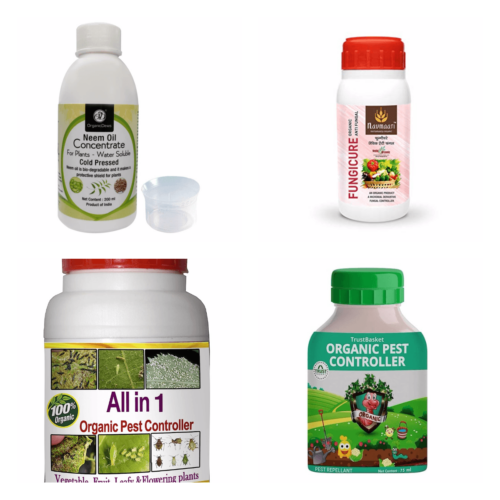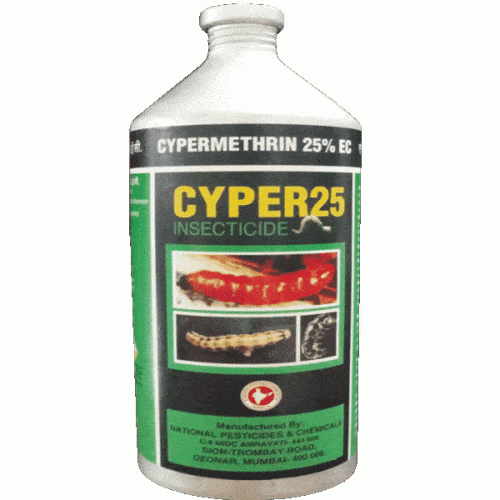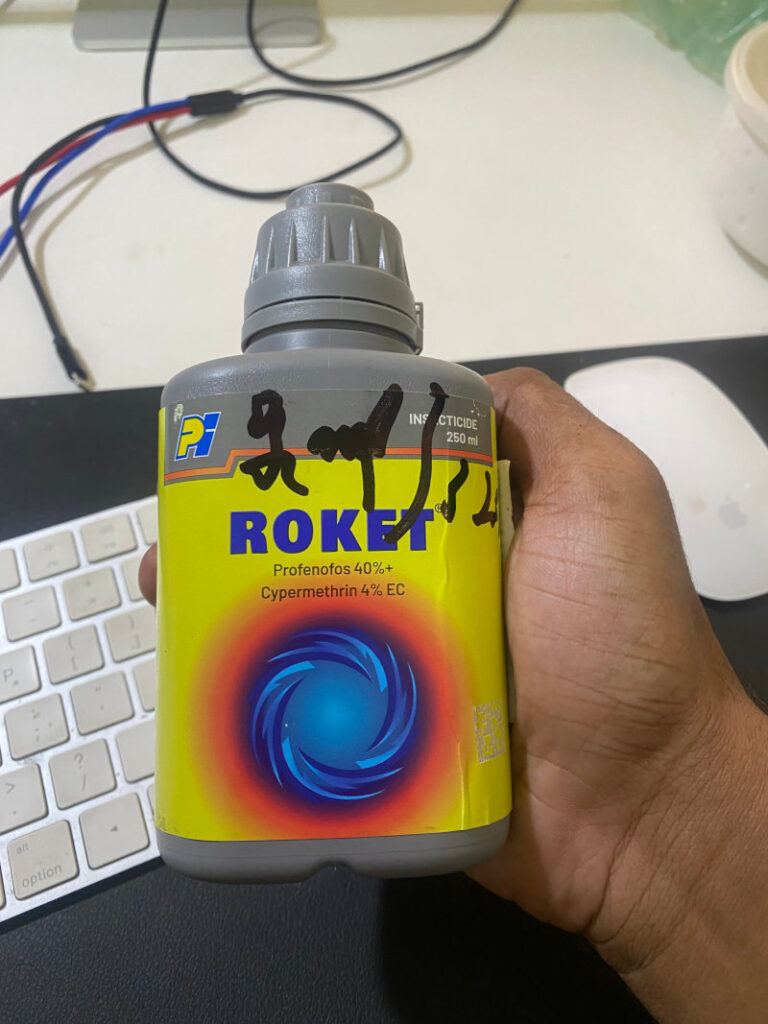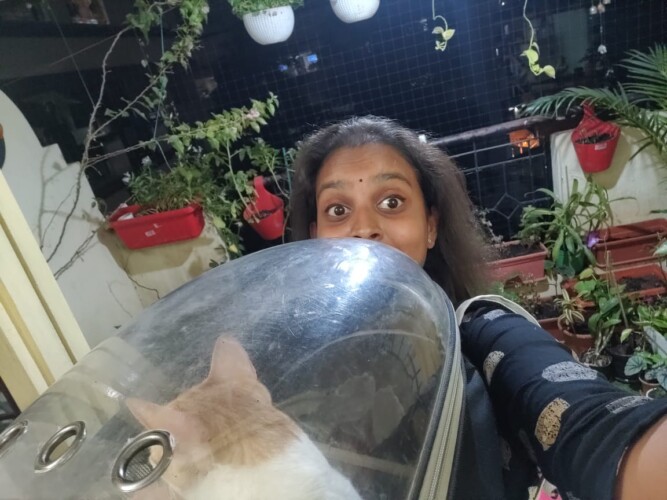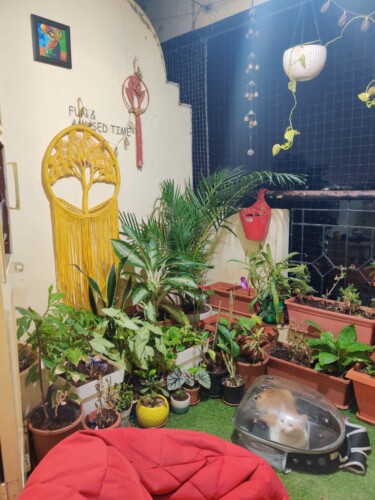Recently, we (me and Vasudha) went for a short trek (around 75 km from Bangalore). We found an agriculture shop selling fertilizers and pesticides on the way back. We have a small garden at our place, and Vasudha has written a great post about it here at https://ideaweb.me/blog/from-cacti-killer-to-gardener/.
We’ve been using natural organic pesticides so far, and this is the first time we are even trying something more powerful and dangerous.
Moving from organic pesticides to a chemical one felt like we’ve leveled up multiple times. In fact, while I spray the organic pesticide vs. chemical, this is exactly how I feel 🙂
This is the actual insecticide we bought.
I don’t know why, but I started reading about Cypermethrin first. It sounded cool, and a simple Google search landed on the Wikipedia page. The first line from the page was this
Cypermethrin (CP) is a synthetic pyrethroid used as an insecticide in large-scale commercial agricultural applications as well as in consumer products for domestic purposes.
Wikipedia
I understood most of it except for a single word – pyrethroid. What is that? Google to the rescue again
A pyrethroid is an organic compound similar to the natural pyrethrins, which are produced by the flowers of pyrethrums (Chrysanthemum cinerariaefolium and C. coccineum). Pyrethroids are used as commercial and household insecticides.
Wikipedia
Oh damn, now there are multiple new words. Pyrethrins, pyrethrums. More and more Googling follows
The pyrethrins are a class of organic compounds normally derived from Chrysanthemum cinerariifolium that have potent insecticidal activity by targeting the nervous systems of insects.
Wikipedia
Pyrethrum was a genus of several Old World plants now classified as Chrysanthemum or Tanacetum which are cultivated as ornamentals for their showy flower heads.
Wikipedia
I’m totally baffled by the matrix I’ve gotten into. The beautiful-looking Chrysanthemum flower, which amazes me a lot, is a class of Pyrethrum. The flower seed cases contain pyrethrins, which can kill insects by targeting their nervous system. And this is what I bought. Talk about a beautiful-looking assassin!
Eventually, my browsing history ended up like this after reading about cypermethrin and how it affects the nervous systems of insects. It felt like I attend 4-5 hours of chemistry class.
Reading these gave a lot of interesting facts about these chemicals and how they operate. When I started this, I wasn’t even sure how it was going to be useful. Then I learned a bunch of things and how they can be helpful.
- Because pyrethrum contains pyrethrins, they are used as companion plants to repel pest insects from nearby crops. No need to buy the chemical if you can plant some Chrysanthemum in between your plants.
- Cypermethrin is very toxic to cats which cannot tolerate the therapeutic doses for dogs.
- Fish are particularly susceptible to cypermethrin, but application around residential sites poses little risk to aquatic life when used as directed.
I was doing all of this search at 2 AM at night and couldn’t sleep anymore. Realizing I was dealing with a weapon of mass destruction created from a beautiful flower, and I wanted to know if it affected the earthworms in any way. From what I’ve read so far, this affects all insects, and the way it affects the nervous system should impact earthworms too. If it does, that was a deal breaker. Back to Google again.
That leads to a research paper published by https://www.pulsus.com/scholarly-articles/combined-toxicity-of-cypermethrin-a-pyerthroid-insecticide-and-metal-to-earthworms-emeisenia-fetidaem-4588.html on how the chemical affects the earthworm.
It was shown that the all-around toxicity from cypermethrin was weak in adult earthworms. Compared with adult earthworms, the toxicity of juvenile earthworms from cypermethrin, especially chronic toxicity, increased significantly. The growth and reproduction of earthworms appeared to be more severely affected by cypermethrin at the juvenile stage than at the adult stage.
Cool, so it doesn’t kill it, but it does affect the growth and reproduction of earthworms. To test this, I did spray a small amount of the pesticide on an earthworm (that appeared small), and it did stop moving (aka died). Of course, my test is not a scientific fact but something to worry about.
Weeks later, I was wondering why I was so curious about this in the first place, and that is what I want to talk about – Curiosity. The passion to learn new things for absolutely no reason at all. Just for the fun of learning.
One of the best podcasts I’ve come across recently is this one https://open.spotify.com/episode/54BjQkzKzSElYvhNI2pOUs?si=a00dc50cb0404808. I was listening to this mostly because I’ve worked with both the guest and the host in different teams of HackerRank. But this line “Skills can be learned. But passion, kindness, and excitement. These are the top 3 qualities I look for”. Probably the core foundation for passion and excitement is curiosity.
Can one develop the skill of curiosity? Yes, of course.
- It is not by chance that people use the term “childlike curiosity.” I find improving curiosity easier by working with people much younger (aka kids) and interns.
- Listen for the trigger word – “This how it is being done” or “That’s how it works.” The minute someone says that, ask – “Why.”
Did it help at all? Yes, it did.
First, I realized I had to keep my fish and the insecticide far apart.
Secondly, when I had to travel for a week, I had Vaasavi water the plants twice. Since she came there with her cat, I knew I shouldn’t ask her to spray the insecticide. So, overall the 4-5 hours was a good investment.
Do you want a simple test to check if you are naturally curious about things? Here is a simple test.
You might have heard about this term chatGPT so so many times in the last few weeks/months. If you have ever wondered what the GPT stands for and what it means, tried to google search, and understand the full form for GPT, you are curious about stuff around you!

